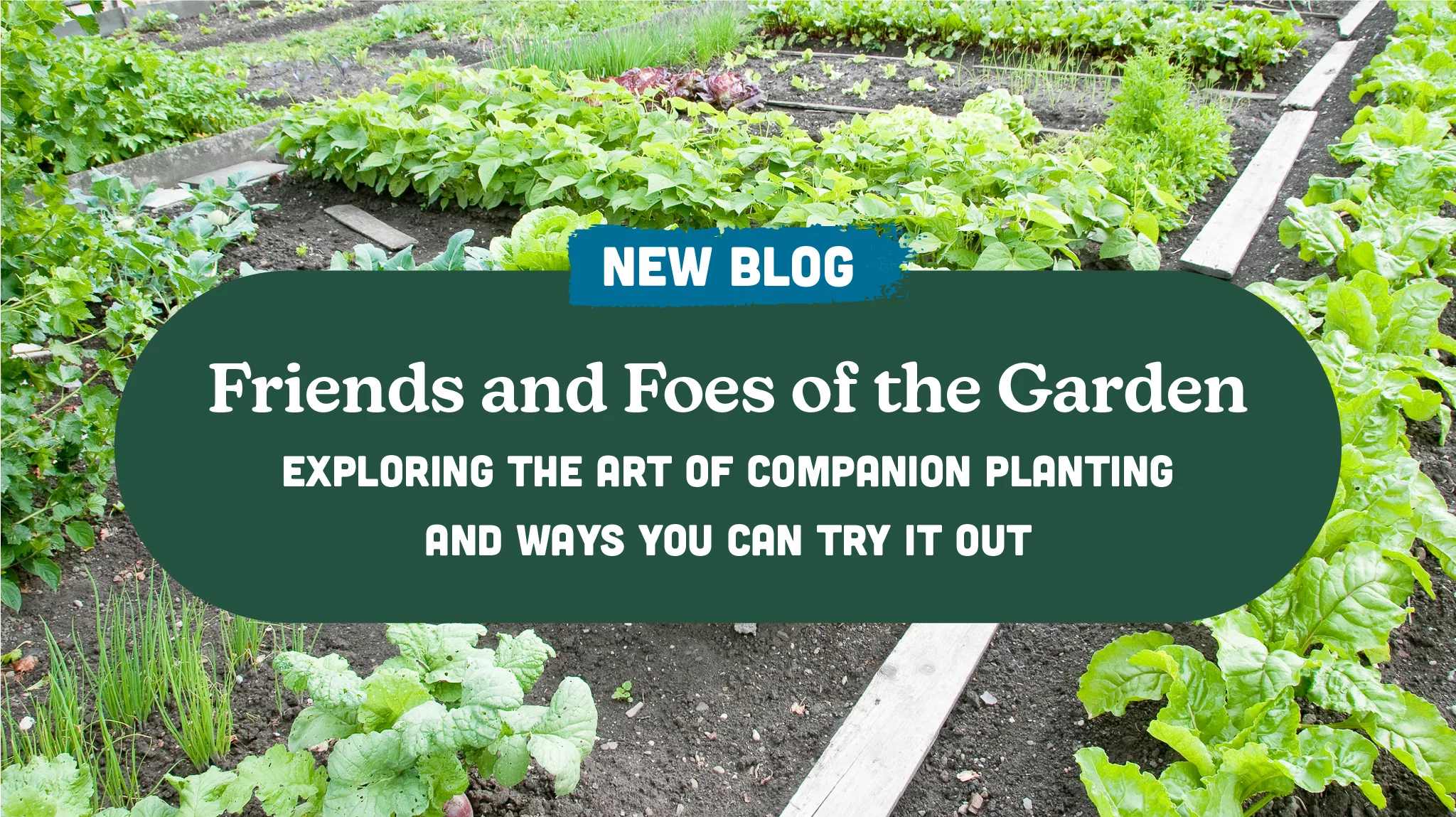Friends and Foes of the Garden

Looking to grow your garden this summer? Gardening is a great hobby, but figuring out where to start can be difficult. Where do you plant what? What do you grow together? Did you know some plants will harm each other if planted in the same garden bed? Ensuring that beneficial crops are planted near each other is one of the many intricate arts of gardening, so today, we are diving deeper into this practice to get you started!
What is Companion Planting?
If you’re new to gardening or agriculture, you may have never heard of companion planting. Companion planting is a method used by farmers and gardeners to maintain a natural balance in the garden by growing plants together that are mutually beneficial. For example, many gardeners plant tomatoes and basil together, as basil repels thrips and moths, which commonly snack on tomato plants.
Studies show that companion planting benefits plant and soil health, as having different root systems offers various advantages. For example, plants with taproots can alleviate soil compaction issues. Crops with deep roots, like asparagus or watermelon, pull nutrients and water deeper into the soil.
While some plants are beneficial to grow next to each other, others can be harmful, so it’s essential to do your research when considering companion planting.
So, what can you plant together? There are so many combinations you can explore when trying out companion planting, but here are a few to get you started!
- Garlic and potatoes: Aphids, a common pest among potatoes, can’t stand garlic! Plant these crops together to repel aphids from your garlic plants.
- Peppers and cilantro: Cilantro attracts beneficial insects like bees while repelling pests like spider mites and aphids.
- Cucumbers and beans: Beans’ root systems greatly increase soil nitrogen, naturally fertilizing the surrounding cucumber plants.
- Strawberries and spinach: Strawberries also attract beneficial insects, such as bees and hoverflies, which pollinate spinach.
Which Plants Shouldn’t I Grow Together?
As mentioned before, some plant combinations are harmful to each other, so it’s important to read up on these combinations before laying out your garden bed. Here are a few big gardening foes to avoid this planting season:
- Tomatoes and potatoes: These plants are both susceptible to the same diseases, such as blight. Planting them together can increase widespread infection among crops.
- Peppers and cabbage: Peppers and cabbage require similar nutrients from the soil, which can lead to competition and reduced crop yields.
- Cucumber and basil: Like peppers and cabbage, cucumber and basil compete for similar nutrients from the soil, leading to reduced yields. Plus, planting these crops together may result in a flavor change in your crops!
- Strawberries and tomatoes: Tomatoes are prone to verticillium wilt, a fungus that can spread to strawberries.
Companion planting is a simple yet effective strategy that can enhance the health and productivity of your garden this planting season! By understanding which plants thrive together and which should be kept apart, you can create a more sustainable and thriving garden ecosystem. To learn more about companion planting, check out the resources below. To learn more about agriculture, gardening, and preservation, click here to check out some of our other blogs. Happy planting, everyone!
References:
https://www.gardenersworld.com/plants/10-companion-plants-to-grow
https://extension.wvu.edu/lawn-gardening-pests/gardening/garden-management/companion-planting
https://www.thespruce.com/pepper-companion-plants-7486883
https://www.gardenia.net/guide/do-not-grow-these-plants-together
https://www.gardenia.net/guide/best-worst-companions-for-peppers
https://www.housedigest.com/1360285/cucumber-basil-worst-companion-plant-garden
